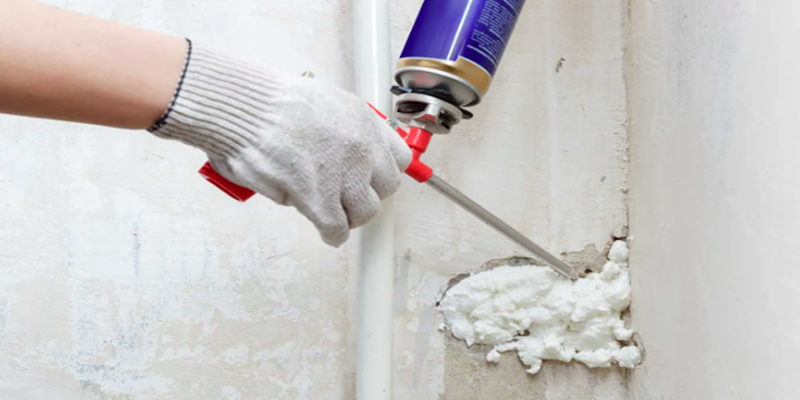Spray foam is a versatile insulation material created through a chemical reaction between two components, commonly referred to as the A and B sides. The B side typically consists of a blend of polyols, which react with isocyanates to produce polyurethane, along with catalysts, flame retardants, blowing agents, and surfactants. When these components are mixed, they react and expand, increasing in volume by 30 to 60 times. This expansion allows spray foam to take the shape of the substrate it is applied to, creating a seamless barrier that significantly improves thermal insulation.
The effectiveness of spray foam insulation is often measured by its R-value, which indicates thermal resistance. Higher R-values correlate with better insulation performance. Spray polyurethane foams are available in various densities and cell structures. Low-density spray foam, known as open-cell SPF, is softer and more flexible, while high-density foam, or closed-cell SPF, is rigid and provides superior insulation properties. At 1.8 to 2 pounds per cubic foot, closed cell spray foam has the highest R-value of any commercially available spray foam insulation material, making it a better choice for energy-efficient building applications.
However, the production of closed-cell spray foams often involves hydrofluorocarbon (HFC) blowing agents, which are associated with high global warming potential. These agents can partially negate the climate benefits provided by energy savings through insulation. To address this environmental concern, many spray foam suppliers have shifted towards hydrofluoroolefin (HFO) foaming agents since early 2017. HFOs have a significantly lower global warming potential and offer a more sustainable alternative without compromising the insulation performance of the foam.
In addition to its insulation capabilities, spray foam can also serve as an effective air barrier, reducing air leakage and contributing to the overall energy efficiency of buildings. This characteristic is particularly beneficial in both residential and commercial settings, where maintaining controlled indoor temperatures is essential.
The use of catalysts, such as MXC-41 and MXC-BDMA, plays a crucial role in the production of spray foam. These catalysts help to accelerate the reaction between the polyols and isocyanates, ensuring a quick and efficient foam formation. By optimizing the curing process, these catalysts enhance the performance and application properties of spray foam, making them indispensable in the industry.Mingxu Chemical Company has produced polyurethane catalyst for more than 20 years of history, we have the best process route and professional team, precise control of the production of catalyst moisture and concentration for market optimization and update catalyst products, a large number of supplies, welcome customers to come to consult.
In conclusion, spray foam is a valuable insulation solution that combines excellent thermal resistance with environmentally friendly advancements. With the continued development of innovative formulations and catalysts, spray foam remains a popular choice for energy-efficient construction and renovation projects.
Post time: Oct-09-2024

